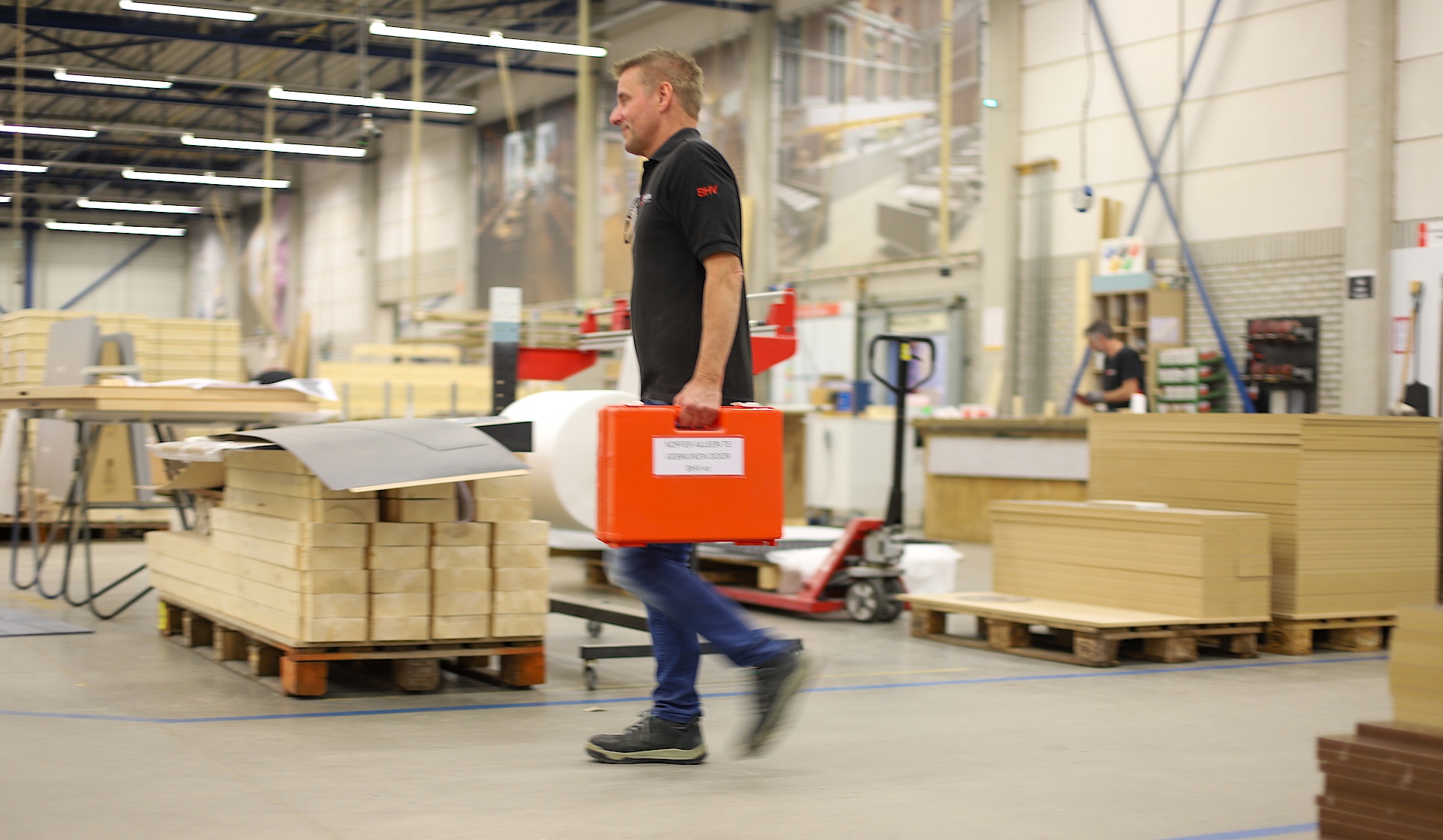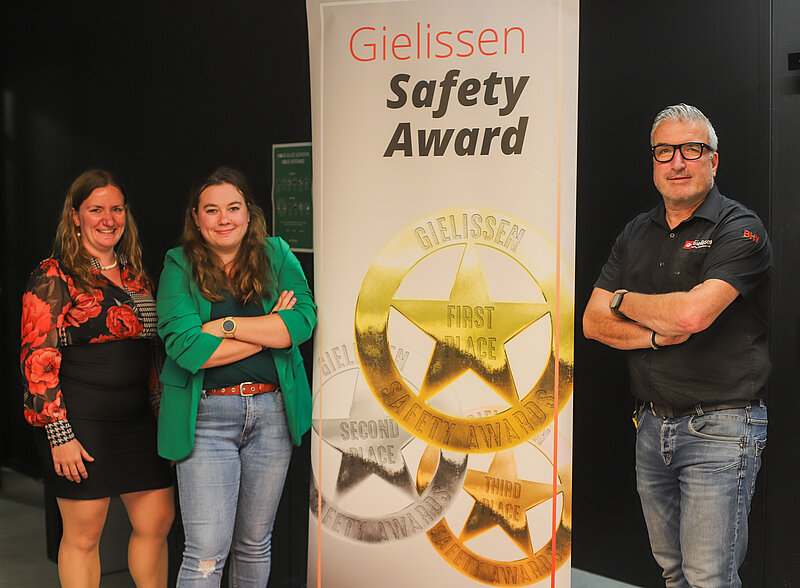This article is appearing today in the Day of BHV magazine and is written by Linda van Hout in Dutch. The English translation is automatically generated and may contain errors. BHV translates to "Company Emergency Response" in English. It involves safety and first-aid measures within workplaces.
Angela has been a BHV coordinator at Gielissen for five years for the Eindhoven location, in addition to her role as a work planner. For Peter, this role is relatively new: he has been a BHV coordinator for two years for the Helmond branch, in addition to his role as a production worker creating beautiful things with his team. LEAN/KAM Manager Fenne Jaminon leads the central safety meetings.



